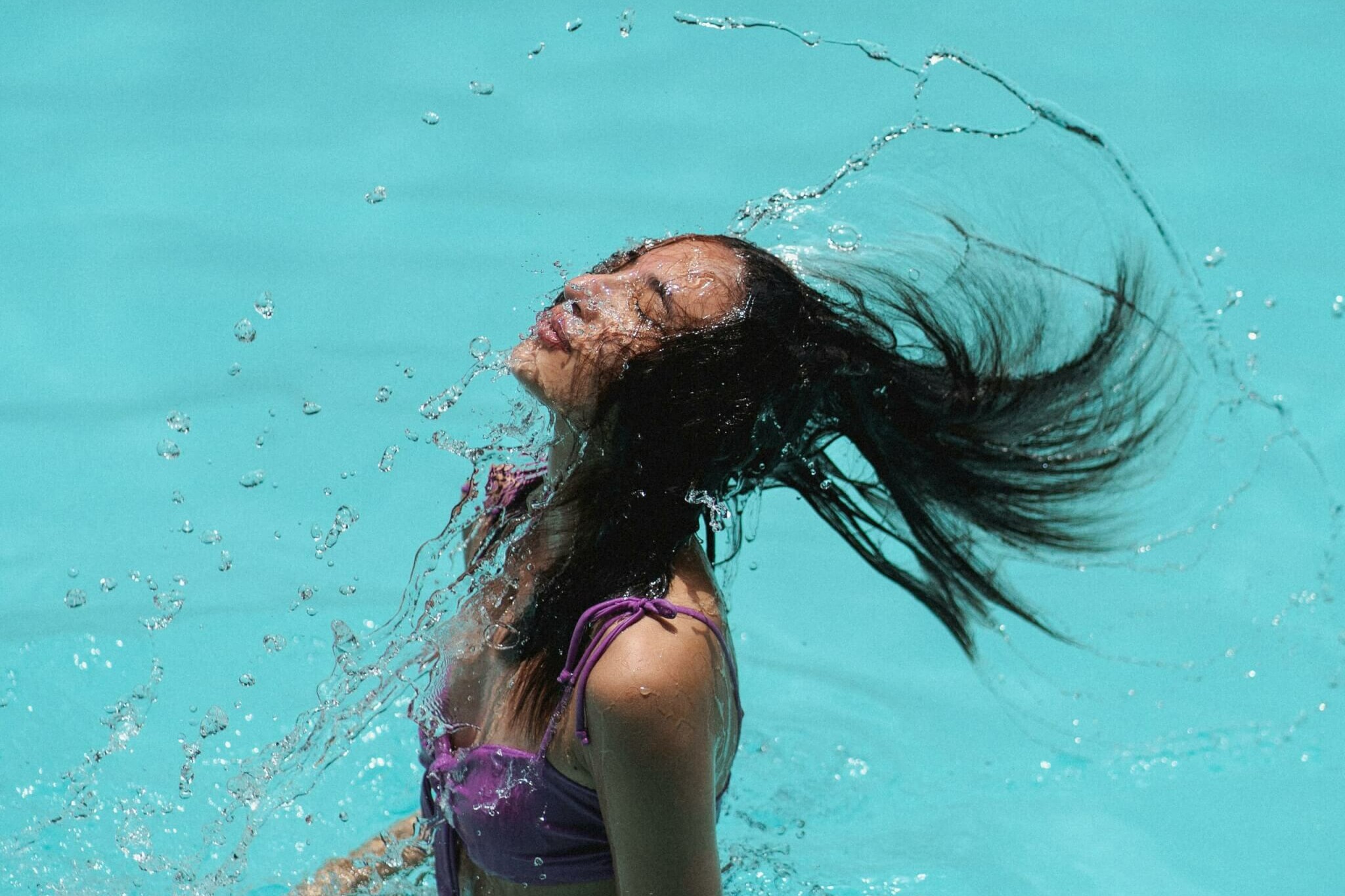The Science Behind Salt Water and Hair Damage
Salt water, especially from the ocean, contains a high concentration of salts, primarily sodium chloride (table salt). When your hair is exposed to salt water, it absorbs the salt, which begins to draw moisture out of the hair shaft. This process of osmosis—where water is pulled out of your hair—leads to dehydration of the hair fibers. As the moisture is stripped away, your hair becomes drier, rougher, and more prone to damage.
Moreover, salt water can also raise the cuticles on the hair shaft, which are the outermost protective layers of your hair. When these cuticles are lifted, the hair loses its smoothness and shine, becomes more porous, and is more susceptible to environmental damage. The raised cuticles also make it easier for the sun’s UV rays to penetrate the hair, exacerbating the drying effect and potentially leading to further damage such as split ends and breakage.
The Consequences of Prolonged Exposure to Salt Water
The occasional dip in the ocean is unlikely to cause significant harm, but regular exposure to salt water can have cumulative effects on your hair’s health. Here are some of the potential long-term consequences:
- Dryness and Brittleness: As mentioned, salt water dehydrates the hair, leading to dryness. Over time, this can make your hair feel brittle and coarse, increasing the likelihood of breakage.
- Split Ends: When your hair becomes dry and brittle, it’s more prone to splitting at the ends. Split ends can travel up the hair shaft, leading to frizz and an overall lackluster appearance.
- Color Fading: For those with color-treated hair, salt water can accelerate color fading. The salt strips away the protective oils and raises the hair’s cuticles, making it easier for the color molecules to escape.
- Loss of Natural Shine: The raised cuticles caused by salt water exposure result in a rougher surface, which reflects light less effectively. This leads to a loss of your hair’s natural shine and smoothness.
- Increased Tangles: Dry and rough hair is more likely to tangle, which can make it difficult to manage and style. Detangling these knots can lead to even more breakage if not done carefully.
How to Protect Your Hair from Salt Water Damage
The good news is that you don’t have to avoid the ocean entirely to keep your hair healthy. By taking some simple precautions, you can minimize the damage caused by salt water and enjoy your summer swimming without worry.
1. Pre-Swim Preparation: Rinse and Protect
Before heading into the ocean, rinse your hair thoroughly with fresh water. When your hair is already saturated with fresh water, it absorbs less salt water, reducing the potential for damage. Additionally, applying a leave-in conditioner or a protective hair serum can create a barrier that locks in moisture and prevents the salt from penetrating the hair shaft.
2. Protective Hairstyles: Braids and Buns
Styling your hair in a protective hairstyle, such as a braid or a bun, can help minimize exposure to salt water. By keeping your hair contained, you reduce the surface area that comes into contact with the water, which in turn reduces the amount of salt that can be absorbed. Plus, these styles can help prevent tangles and knots, making your post-swim hair care routine much easier.
3. Wear a Swim Cap or Hat
If you plan on spending a lot of time in the water, consider wearing a swim cap. While it may not be the most stylish accessory, it’s highly effective at protecting your hair from direct contact with salt water. For those who prefer a more fashionable option, a wide-brimmed hat can provide some protection by shielding your hair from the sun and limiting its exposure to salt water.
4. Post-Swim Rinse: Fresh Water First
After swimming, it’s crucial to rinse your hair with fresh water as soon as possible. This helps wash away any lingering salt and prevents it from continuing to draw moisture out of your hair. Follow up with a gentle shampoo to cleanse your hair thoroughly and remove any remaining salt or sand.
5. Deep Conditioning: Restore Moisture
Regular deep conditioning treatments are essential for restoring moisture to your hair after exposure to salt water. Look for products that are rich in hydrating ingredients like shea butter, coconut oil, or argan oil. These treatments help to repair any damage, smooth down the hair cuticles, and leave your hair feeling soft and manageable.
6. Detangling: Be Gentle
After a day at the beach, your hair might be more prone to tangles. Use a wide-tooth comb and a gentle detangler to work through any knots, starting from the ends and working your way up to avoid breakage. Being gentle during this process is key to preventing further damage.
7. Hydration: From the Inside Out
Finally, remember that healthy hair starts from within. Staying hydrated by drinking plenty of water throughout the day helps keep your hair moisturized from the inside out. A balanced diet rich in vitamins and minerals also plays a crucial role in maintaining strong, resilient hair.
Embrace the Summer Without Sacrificing Hair Health
Summer is a time for fun, relaxation, and enjoying the great outdoors, including the beach. While salt water can pose challenges for your hair, it’s entirely possible to protect your locks and keep them looking their best. By following the tips outlined in this guide, you can enjoy the sun and sea without worrying about long-term damage to your hair.
Remember, your hair is an extension of your overall self-care routine. Taking the time to protect and nourish it will not only keep it looking beautiful but also enhance your confidence and well-being. So go ahead—dive into those waves, enjoy the ocean breeze, and let your hair shine all summer long!
Related Articles
November 15, 2024
The Art of Detangling: How to Protect Your Wet Hair from Breakage and Split Ends
Detangling wet hair is a common part of many people’s hair care routine, yet…
November 10, 2024
The Hidden Dangers of Brushing Wet Hair: Why Your Hair is 50% Weaker When Wet and How to Protect It
Brushing your hair is an essential part of most people's daily grooming…
June 26, 2023
Sun, Sand, and Strands: Your Guide to Summer Hair Care
As the temperature rises and the sun beckons us to outdoor adventures, it's…




